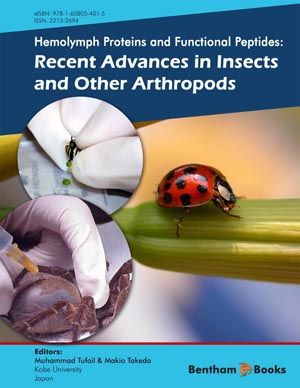Abstract
The embryonic development of all oviparous animals occurs isolated from the maternal body. The egg should therefore contain all necessary supplies for the development of the embryo until eclosion. This supply is called yolk and is composed of nucleic acids, proteins, lipids and carbohydrates, stored in an organized manner inside the egg. Most of the yolk protein components are taken up during oocyte development via receptor-mediated endocytosis. Major proteins accumulated by insect oocytes are the two hemolymph lipoproteins, vitellogenin (Vg) and lipophorin (Lp). Once sequestered, the Vg is sent to yolk bodies for processing and stored as vitellin (Vn), the main nutritional reserves for the future embryo, whereas Lp (the high density Lp, HDLp) after unloading lipids (which are stored as lipid droplets, the energy source for the embryo) is stored as a very HDLp (VHDLp). This chapter reviews the current state of knowledge on the major yolk protein precuros (YPPs), the Vg and Lp, in insects and their role in oogenesis. Besides the biochemical and molecular aspects, the hormonal regulation and the uptake mechanism of these YPPs by the developing oocytes through receptor-mediated endocytosis will be addressed. Also, we point out some of the important areas for future research.
Keywords: Lipoproteins, vitellogenin, lipophorin, high density lipophorin, transcriptional regulation, endocrine disrupters, lipoproteins processing, phylogenetic relationship, vitellogenin receptor, lipophorin receptor, endocytosis, oogenesis.






















